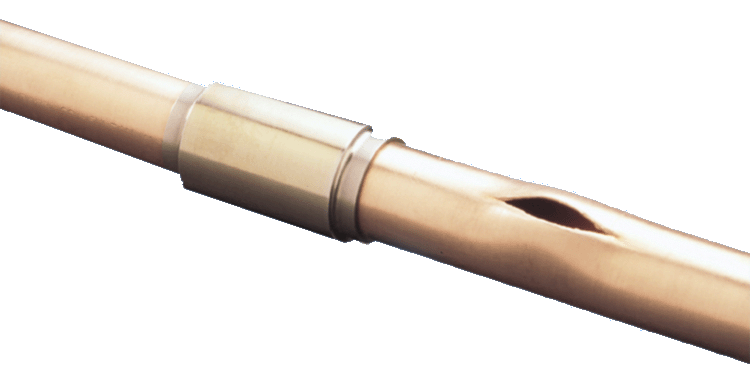


The shape-memory effect in nickel-titanium
alloys was first discovered at the Naval Ordnance Research Laboratories in
1962. This new technology came to the attention of Raychem Corporation, which
began metallurgical research in 1967, eventually leading to the development
and characterization of the alloy, Tinel.
Tinel resembled the properties of stainless steel, and was found to be extremely strong and resistant to corrosion and fatigue - outstanding characteristics that provided a foundation for producing more reliable products.
The first commercial application of Tinel was designed and qualified for Grumman Corporation in 1969. The result was a product line which provided a complete 3,000 psi CryoFit permanent fitting system for the U.S. Navy's F-14 Tomcat Jet Fighter. Four years later, a 4,000 psi CryoFit system was designed and qualified for the British Royal Navy surface ships. In 1975 this proven system was extended to the Trafalgar-class nuclear submarines.
During the mid-1980's, discussions were held with the National Fire Protection Association (NFPA) dealing with the use of these fittings. NFPA adopted the shape-memory alloy coupling as an approved alternative to brazed joints in NFPA 99-1987. See NFPA 99 Health Care Facilities Handbooks under the following sections of NFPA 99-1999 chapter four and now NFPA 99-2002 chapter five, Gas and Vacuum Piping Systems.
Testing of SMARTFIT® Couplings on copper water tube show no leaks in joints up to 7500 psi. The copper water tube failed above that pressure.
